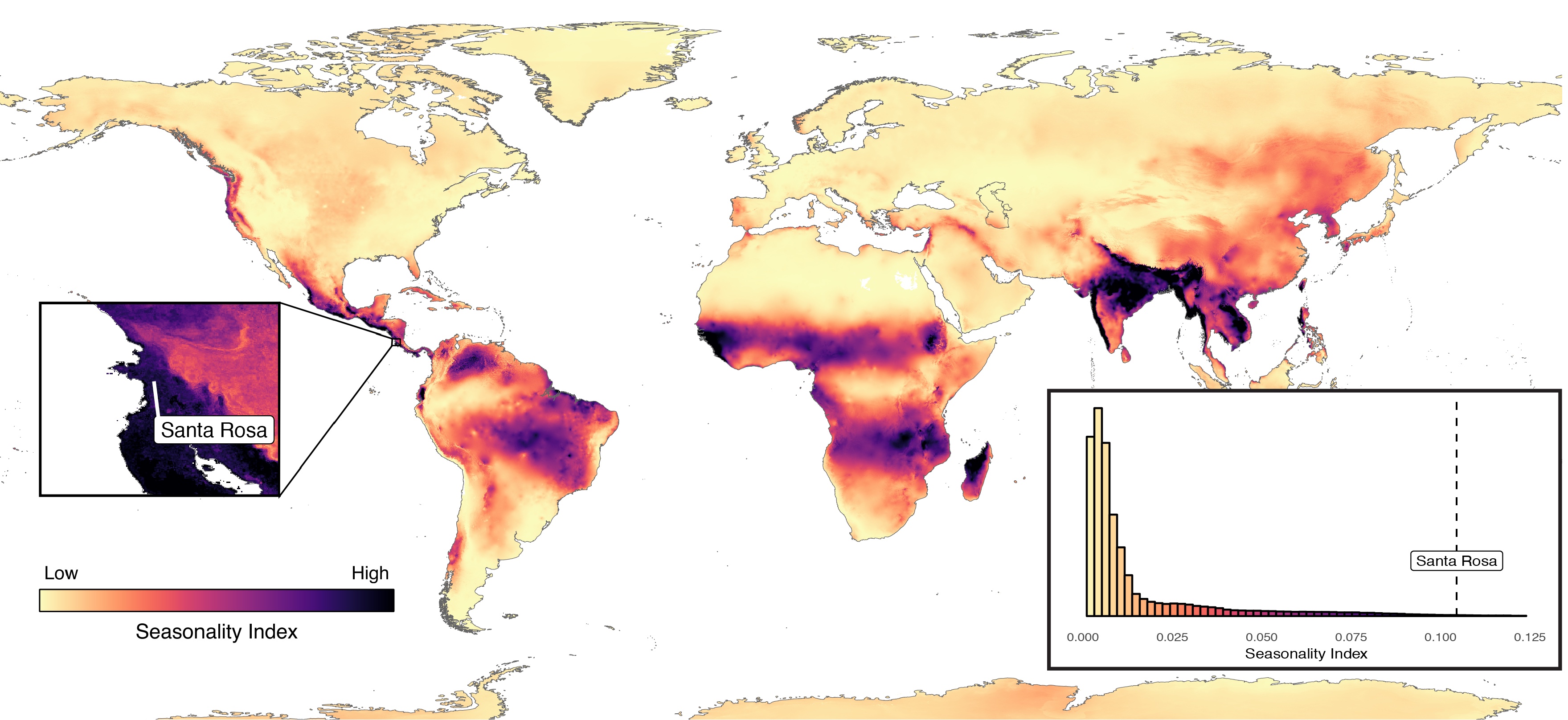 A recent burn in the Área de Conservación Guanacaste, Costa Rica.
A recent burn in the Área de Conservación Guanacaste, Costa Rica.Environmental Stressors
Drought and primate infant mortality
Extreme climate events can have important consequences for the dynamics of natural populations, and severe droughts are predicted to become more common and intense due to climate change. We analysed infant mortality in relation to drought and fruit abundance using long-term data. During severe drought, we see high capuchin infant mortality, and spider monkeys stop reproducing.
Campos et al. (2020) Roy Soc Open Sci.
Climate Seasonality
Climate seasonality poses unique challenges to long-lived organisms in tropical dry forests: they must tolerate both long dry periods and long wet periods, and they must cope with the variable timing of transitions between wet and dry seasons. My colleagues and I have published studies that document how these challenges are met in a population of arboreal monkeys. These studies provided new insights into the strategies and behavioral tactics used by organisms to contend with periodic biophysical adversity.
Seasonality in the tropical dry forests of Costa Rica is exceptionally strong. Although the region receives about 1,700 mm of rain each year, the rainfall is almost entirely confined to a 5-6 month wet season with moderate temperatures and lush vegetation. By contrast, the dry season—with its high temperatures and extreme scarcity of surface water—can be a difficult time for the primates. To conserve water, most trees in the forest lose their leaves, exposing the monkeys to intense solar radiation.

I review these climatic processes in a book chapter: Campos (2018) Primate Life Histories, Sex Roles, and Adaptability - Essays in Honour of Linda M. Fedigan..
Behavioral Thermoregulation
My Master’s research examined the behavioral strategies that the capuchins use to cope with this extreme seasonality. I found that they reduce activity during the hottest hours of the day, and they concentrate their movements around the few remaining sources of surface water. They also extend their tongues in hot dry conditions, presumably to cool themselves via evaporation of saliva from the tongue.